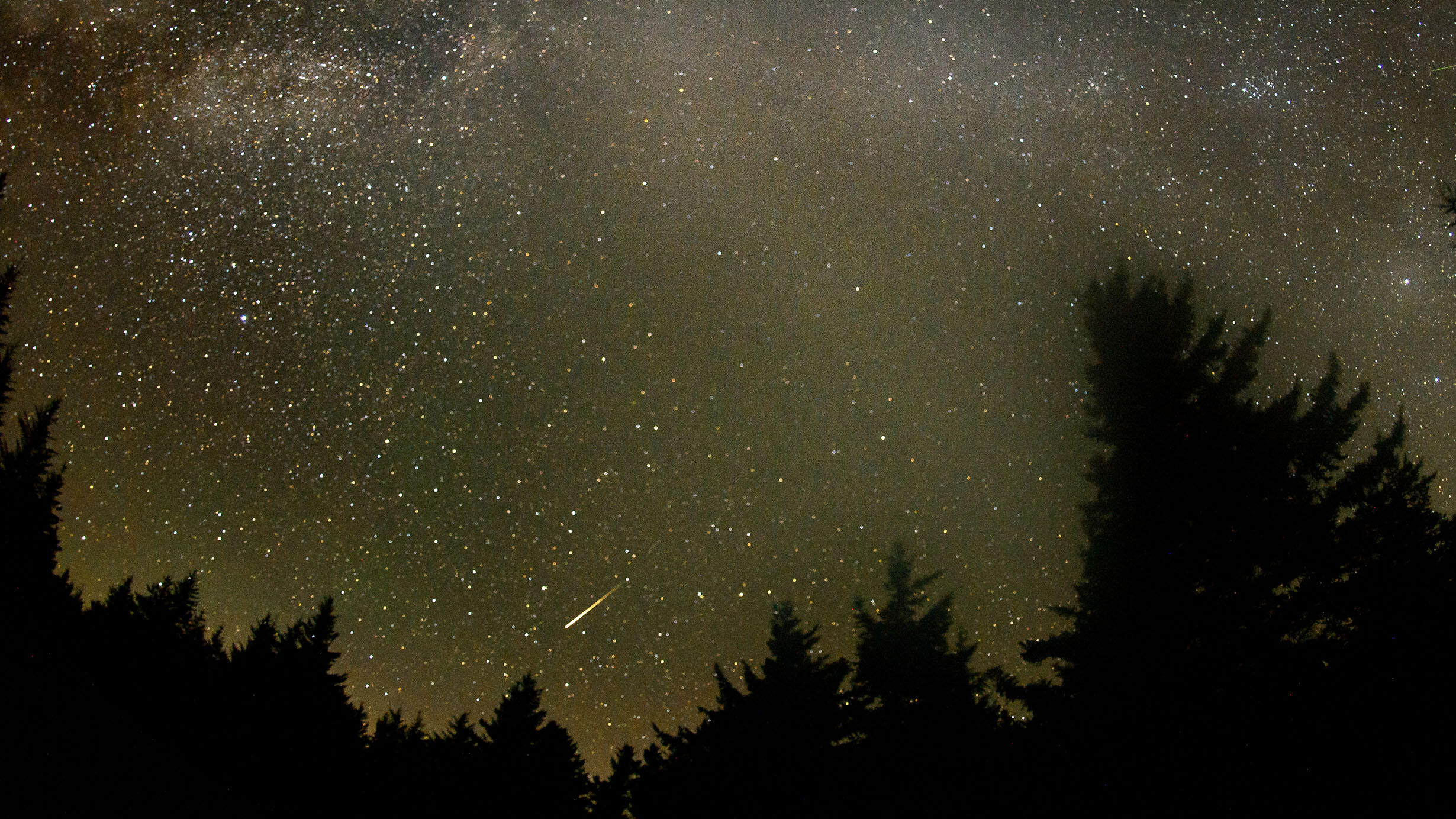 A meteor streaks across the sky during the annual Perseid meteor shower.
A meteor streaks across the sky during the annual Perseid meteor shower.In the early morning of Tuesday, May 31, stargazers across North and South America might get to see a “surprise” meteor shower thanks to a comet that split apart 27 years ago and continues to disintegrate.
If conditions are just right as Earth passes through a dense stream of icy particles that this comet left behind, it might produce a “meteor storm,” a phenomenon that hasn’t been seen since the early 2000s.
“Meteor showers are notoriously fickle, but, historically, we are long overdue for an event like this,” said Hayden Planetarium Associate Joe Rao, who, last year, published a study about the possible event for the Journal of the Royal Astronomical Society of Canada. “We could see nothing, or just a few meteors, but if we’re lucky, this could be a once-in-a-lifetime event.”
The comet from which the meteor shower may emanate was discovered in 1930 by German observers Arnold Schwassmann and Arno Arthur Wachmann, and was named 73P/Schwassmann-Wachmann 3, or “SW3.” This comet orbits the Sun every 5.4 years, but because it was so faint, it wasn’t seen again until the late 1970s.
In 1995, astronomers noticed something strange: the comet had become about 400 times brighter and was now visible by the naked eye during its passage. It had split into pieces. By 2006, it had broken into nearly 70 pieces.
Whether this ongoing disintegration will result in a remarkable shower—yet to be named—rests on two factors: the position and speed of the larger particles that broke off from the comet. If these gravel-sized particles are ahead of the comet, they could produce a meteor outburst. But if they aren’t traveling fast enough to be in this position, viewers are unlikely to see much.
On the East Coast, peak viewing time is calculated to be 1 am on Tuesday, May 31. The new moon falls the day before, on May 30, so skies will be dark. Rao recommends that anyone who wants to try to see this possible event get to a spot that’s far away from bright lights.
"It’s possible that nothing at all will occur at the appointed time,” said Rao. “But we’ll just have to go out, look skyward, and hope that nature is in a show-off mood."